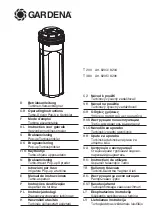
9. Series 8 I/O
Link Fiber Optic Extenders (FOE)
9.4. Defining the Fiber Optic topology
252
Series 8 I/O User's Guide
R500
Honeywell
April 2017
Star topology
This technique uses interconnected FOEs to allow a single incoming fiber cable to
star
to
multiple remote sites. It can also be referred to as a
chicken-foot
topology.
Maximum flight delay times
The I/O link communication protocol imposes a constraint between the C300 controller
and the most distant I/O location, known as maximum flight delay time. This places a
limit on the combined number of FOEs, and cumulative fiber cable length permitted in
any IOL path. This constraint varies for:
Series 8 - maximum cable length is 4 Km
Each FOE (except for the local site) subtracts an additional .25
Km
Fiber optic budget considerations
ATTENTION
Fitting terminations to fiber optic cable requires special equipment and
techniques. In order to obtain the best results, a trained person should
perform this operation in accordance with the manufacturer's instructions. For
these reasons, the following installation instructions do not include detailed
procedures for this process.
Testing of the quality (loss) of the terminations should be carried out at each
stage.
Standard I/O link extender maximum cable span calculation
The following calculation MUST be used to ensure that the number of planned splices
and the cable choice supports the necessary cable span distance.
The maximum cable span calculation (in Km) is as follows:
Max Span =
(Available Optical Power - Losses in Splices)/(Max Loss per Cable
Type)
The calculations or values for each of the above variables are described below.
Available standard I/O link extender optical power
The available optical power calculation is as follows:
Transmit Power - Minimum Receiver Sensitivity - Power Loss Over Time =
















































